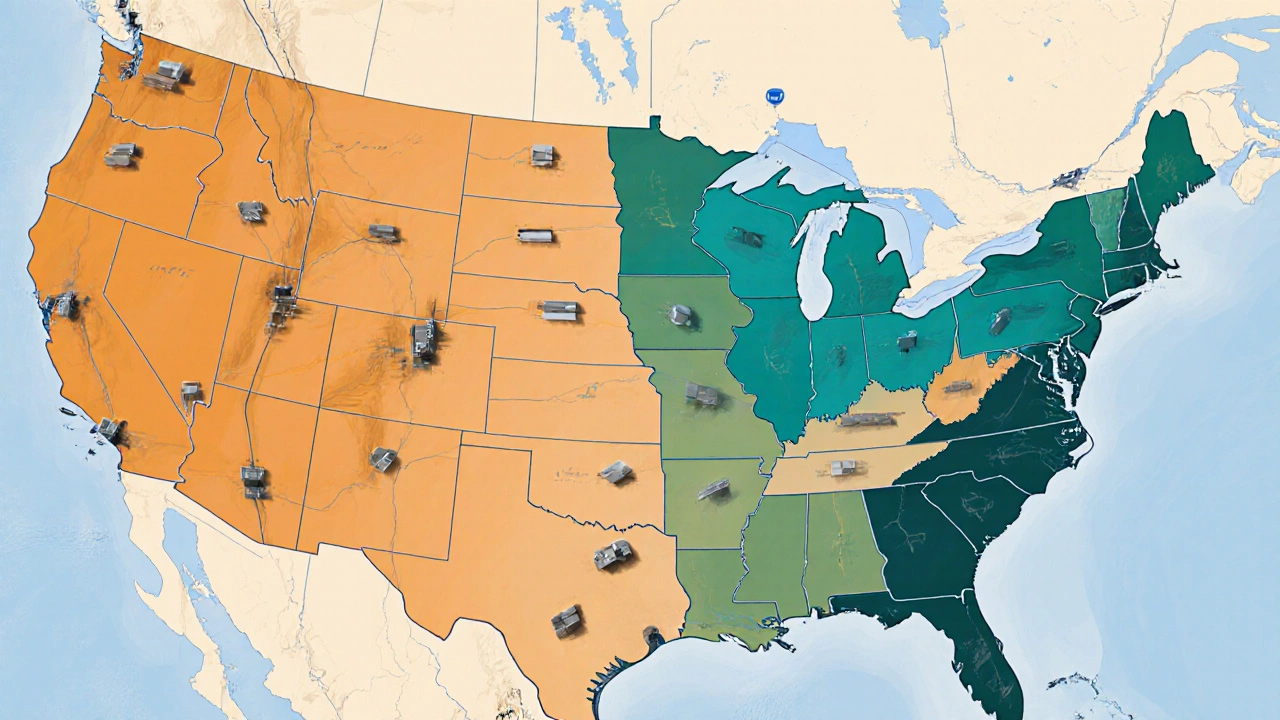What Is the Average Warehouse Rent in the US? 2025 Guide
Discover the 2025 average US warehouse rent, regional price differences, key cost drivers, and tips for securing the best lease.
When planning logistics, average warehouse rent US, the typical cost per square foot that businesses pay to lease storage space across the United States. Also known as US warehouse leasing rates, it reflects market demand, location, and facility type. Understanding this figure helps you budget for industrial real estate, properties used for manufacturing, distribution, and storage and aligns with logistics cost structure, the collection of expenses involved in moving goods. The average rent varies from pricey coastal metros to affordable Mid‑West towns, and it ties directly to warehouse type, whether a facility is a storage warehouse, distribution center, or fulfillment hub. Below we break down the main drivers and show how they impact your overall supply‑chain budget.
Location premium is the first driver most people notice. A city like New York or San Francisco adds 30‑50% to the base rate because land is scarce and demand from e‑commerce firms is high. In contrast, a town in Indiana or Ohio often offers rates under $5 per square foot, giving small businesses a cost edge. Square‑footage size also matters: larger spaces usually earn a lower per‑square‑foot price, a classic economies‑of‑scale effect. Lease terms play a role too; a 10‑year triple‑net lease locks in a lower rate than a short‑term gross lease, which includes taxes and maintenance. Finally, the level of automation or climate control in a facility can push the rent up by $1‑2 per square foot, because those features reduce handling costs later on.
These variables create a clear semantic chain: average warehouse rent US encompasses location premium, square‑footage economies, and lease structure. It requires businesses to assess industrial real estate options, match them with their logistics cost structure, and choose the right warehouse type for their product mix. For example, a high‑turnover fashion brand will favor a fulfillment hub near a major port, accepting a higher rent for faster delivery. A bulk‑goods manufacturer might pick a low‑cost storage warehouse in the interior, saving on rent while using its own fleet for the last mile.
Another often‑overlooked factor is market cycles. When construction of new distribution centers spikes, vacancy rates rise and rents drop for a few quarters. Conversely, when e‑commerce sales surge, demand for space squeezes the market and rates climb quickly. Keeping an eye on the latest industrial real‑estate reports can give you a timing advantage. Some businesses lock in rent early through phased lease agreements, paying a modest increase each year instead of a steep jump when the market peaks.
Technology also nudges the average rent. Smart‑warehouse platforms that integrate inventory tracking, robotics and energy‑efficient lighting reduce the total cost of ownership. Landlords that invest in these upgrades can command higher rents, but the payoff often shows up in lower operating expenses for tenants. In practice, a $1 increase per square foot can be offset by a 10% reduction in labor costs, making the overall logistics budget healthier.
When you compare regions, the data tells a story. The West Coast averages $12‑$15 per square foot, the Northeast hovers around $10‑$13, the Midwest stays near $5‑$8, and the South ranges from $6‑$9. These numbers are snapshots from the latest Q3 2024 market survey and will shift as new fulfillment networks roll out. If you’re deciding where to locate a new distribution hub, line up your product velocity, shipping lanes and labor pool against these regional rent benchmarks.
Putting all this together, the average warehouse rent US is more than a number—it’s a decision point that influences every downstream logistics cost. By dissecting location premiums, lease terms, warehouse types and technology investments, you can predict how rent will affect your bottom line. The articles below dive deeper into each of these angles, offering real‑world examples, calculation tools and actionable tips to help you negotiate the best rate for your business.

Discover the 2025 average US warehouse rent, regional price differences, key cost drivers, and tips for securing the best lease.